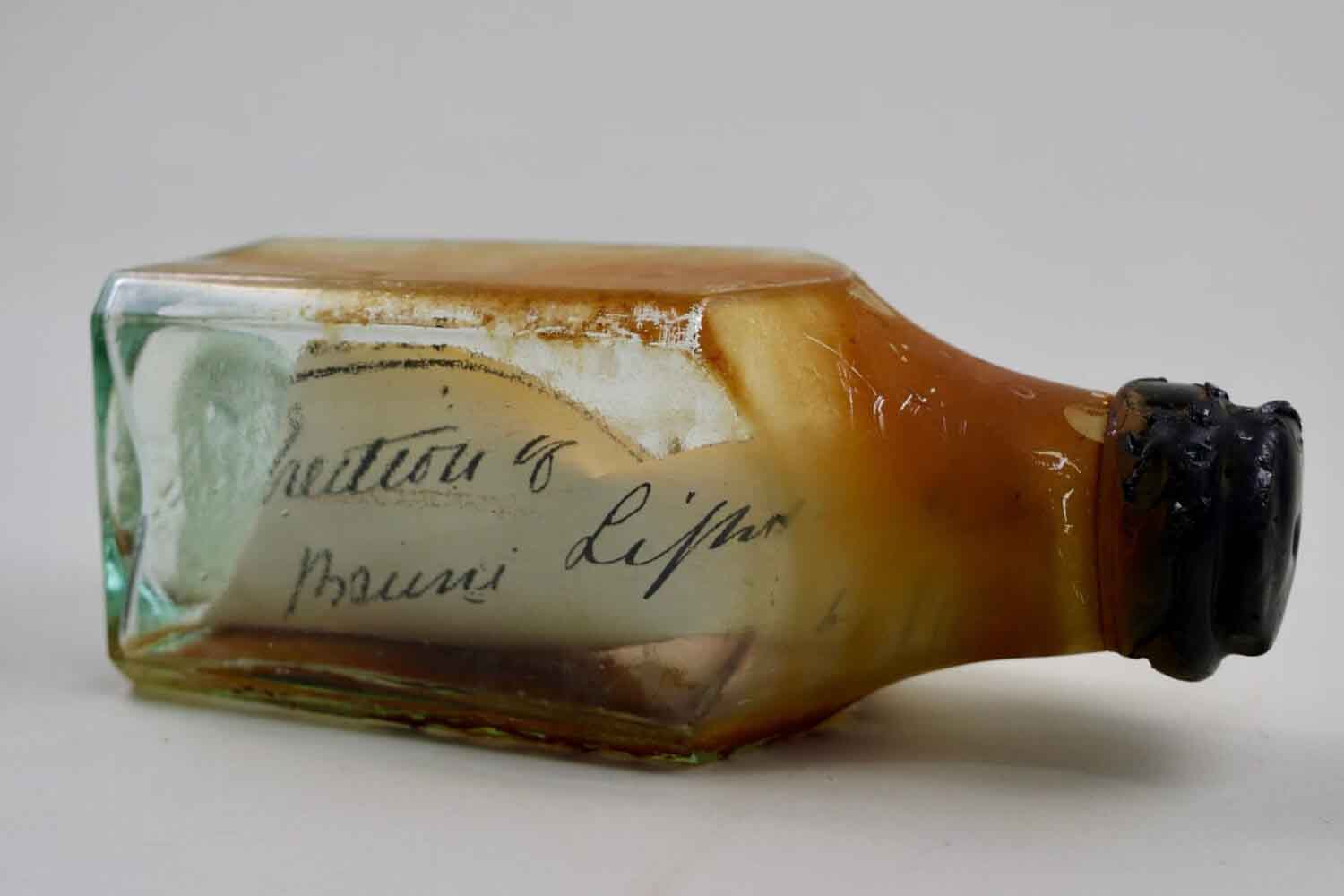A sealed bottle hidden in Tasmania’s Cape Bruny Lighthouse for over a century reveals a handwritten 1903 letter by inspector J.R. Meech, detailing life and work at the time.

©Bernie/Tasmania Museum and Art Gallery
It was supposed to be just another workday for Brian Burford, a specialist painter tasked with maintaining the lantern at Cape Bruny Lighthouse, on Tasmania’s southeastern coast. While scraping rust from an interior wall, something unusual caught his eye—a small glint, almost like a wink from the past.
Leaning closer, he saw a sealed glass bottle, wedged deep inside the wall, carefully concealed as if it had been waiting for this very moment. Inside, there was an envelope containing two neatly folded handwritten sheets. The date on them read January 29, 1903.
The author was J.R. Meech, then inspector of lighthouses for the Hobart Marine Board, the agency responsible for Tasmania’s beacons. In his precise, deliberate handwriting, Meech documented the year’s work on Cape Bruny: the installation of a new staircase, a renewed floor, a completely replaced lantern, and a modern lens. He noted the costs incurred, the names of those involved, and details that painted both a technical and human portrait of life at the lighthouse. It was, in essence, a diary hidden in the wall—perhaps left intentionally for a future reader.
A delicate operation
The moment the bottle was found, word reached the experts at the Tasmania Parks and Wildlife Service. Annita Waghorn, heritage officer, still recalls her disbelief:
“The painters called us saying they had found a bottle in the lighthouse wall—we couldn’t believe it.”
That section of the structure had been sealed since 1903, the year the current lantern was installed. For more than a century, the narrow space remained closed off—keeping its message perfectly preserved.
Opening the bottle without damaging its contents required the skill of the paper conservation team at the Tasmanian Museum and Art Gallery. The stopper was sealed with bitumen, a tar-like substance. As paper conservator Cobus van Breda explained:
“We had to scrape it away with extreme precision, without breaking the glass.”
The letter inside was folded so tightly that extracting it intact demanded almost surgical patience. It took days before it could be read in full.
A window into the past
Recently we brought you a story about a message in a bottle found in the wall of the Cape Bruny lighthouse. When first…
Posted by Tasmania Parks and Wildlife Service on Wednesday, August 6, 2025
J.R. Meech was far more than a routine inspector. He personally oversaw some of the most remote and challenging lighthouses in Tasmania, including those on Maatsuyker Island, Tasman Island, Cape Sorell, Table Cape, and Mersey Bluff.
His letter offers more than technical updates—it’s a living fragment of how work and life unfolded at these lonely outposts over a hundred years ago. The handwriting, the specific names, the precise costs (originally listed in pounds but roughly equivalent to about $1.60 USD today for each pound [£1]), all serve as tiny anchors to a world that has long since changed.
For now, the fragile document will remain in safe storage. Museum curators are weighing the best way to share it with the public—because some secrets, once uncovered, deserve to be seen.
